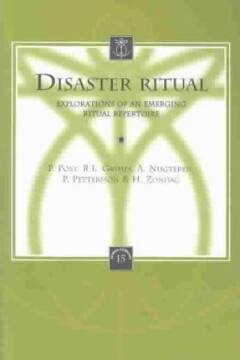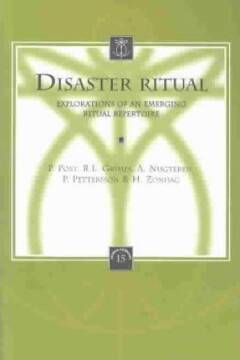
Je cadeautjes zeker op tijd in huis hebben voor de feestdagen? Kom langs in onze winkels en vind het perfecte geschenk!
- Afhalen na 1 uur in een winkel met voorraad
- Gratis thuislevering in België vanaf € 30
- Ruim aanbod met 7 miljoen producten
Je cadeautjes zeker op tijd in huis hebben voor de feestdagen? Kom langs in onze winkels en vind het perfecte geschenk!
- Afhalen na 1 uur in een winkel met voorraad
- Gratis thuislevering in België vanaf € 30
- Ruim aanbod met 7 miljoen producten
Zoeken
Disaster Ritual
Explorations of an Emerging Ritual Repertoire
P Post, Rl Grimes, A Nugteren, P Pettersson, H Zondag
€ 91,95
+ 183 punten
Omschrijving
People increasingly look to rituals after a disaster. A silent procession and a memorial service are carefully and observantly organised, preparations are begun for a lasting monument in memory of the victims, or people keep up the tradition of an annual commemoration. Remarkably enough, this ritual repertoire has received hardly any attention from researchers. This book is a report on the first exploration of these rituals which emerged particularly in the 1990s. The exploration focuses on the situation in the Netherlands. From the case studies analyzed a strikingly coherent and well-organised repertoire comes to light, which has become established in a rather short time. There appears to be interaction with both Dutch and international contexts (i.e., influence from the memorial rites after the death of Diana, Princess of Wales, the 'Dutroux affair' in Belgium, and the rites after a series of episodes of street violence in the Netherlands), as well as with previous, more divergent ritual traces of a Christian-liturgical, general-religious and profane-secular nature. This study more particularly looks at disaster ritual from the perspective of contemporary ritual dynamics. As such, it makes a contribution to gauging the ritual-liturgical milieu today. To this end, the central concepts of disaster and ritual are first defined. Next follows an assessment, first in general through a survey of disasters in the Netherlands and other countries, then on the basis of five Dutch case studies, each of which illuminates a particular theme in disaster ritual, and two international case studies (the 'Estonia' ferryboat disaster and September 11). Then comes a more broadly conceived contextual and analytic chapter in which the general context of contemporary ritual developments is elaborated. The closing chapter has the nature of the familiar 'synthesis and perspective'.
Specificaties
Betrokkenen
- Auteur(s):
- Uitgeverij:
Inhoud
- Aantal bladzijden:
- 298
- Taal:
- Engels
- Reeks:
Eigenschappen
- Productcode (EAN):
- 9789042912915
- Verschijningsdatum:
- 12/08/2003
- Uitvoering:
- Paperback
- Formaat:
- Trade paperback (VS)
- Afmetingen:
- 151 mm x 236 mm
- Gewicht:
- 476 g

Alleen bij Standaard Boekhandel
+ 183 punten op je klantenkaart van Standaard Boekhandel
Beoordelingen
We publiceren alleen reviews die voldoen aan de voorwaarden voor reviews. Bekijk onze voorwaarden voor reviews.









